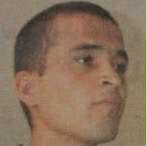
d: 2005
Mohammed Bijeh
Summary
Name:
Mohammed BijehYears Active:
2004Status:
ExecutedClass:
Serial KillerVictims:
54Method:
Blows from a stoneDeath:
March 16, 2005Nationality:
Iran
d: 2005
Mohammed Bijeh
Summary: Serial Killer
Name:
Mohammed BijehStatus:
ExecutedVictims:
54Method:
Blows from a stoneNationality:
IranDeath:
March 16, 2005Years Active:
2004bio
Mohammed Bijeh, known throughout Iran as the “Desert Vampire of Tehran,” was born around 1980 and grew up in a poor suburb of Pakdasht, near Tehran, Iran. His childhood was marked by deprivation, abuse, and neglect. Reports from local media described him as a quiet but deeply disturbed young man who suffered both physical and psychological trauma during his early life. He had only limited education, and from a young age, he worked in menial labor to support himself.
Like many impoverished Iranians, Bijeh grew up in the shadow of post-war poverty and the social disarray of urban migration. As an adult, he lived near the Kahrizak desert area, an arid region southeast of Tehran surrounded by refugee camps and informal settlements. There, he worked in small trades and had easy access to vulnerable populations — particularly Afghan refugee children who were often undocumented and whose families feared contacting police due to their immigration status.
Psychological assessments after his arrest suggested that Bijeh exhibited classic signs of antisocial personality disorder. He appeared emotionless, remorseless, and predatory. Despite this, neighbors described him as an unremarkable man who blended into his working-class environment — a man whose monstrous crimes were hidden behind an ordinary facade until the discovery of multiple bodies in the desert revealed his true nature.
murder story
Between March and September 2004, Mohammed Bijeh embarked on one of Iran’s most horrifying killing sprees, targeting young boys aged 8 to 15 in the rural desert areas near Pakdasht, south of Tehran.
Using deception and familiarity, Bijeh lured his victims — many of them from poor Afghan refugee families — by offering to take them on trips to hunt animals in the nearby desert. Once isolated, he sexually assaulted, strangled, and murdered the children. In several cases, he burned or buried the bodies to conceal the crimes.
The disappearances of multiple children over months created panic among local residents. However, many of the missing boys were never formally reported due to their families’ fear of deportation. This failure in reporting, combined with police negligence, allowed Bijeh to continue killing for months.
By April 2004, Bijeh had been briefly arrested after several children went missing, but he was released on bail for lack of evidence. His murders escalated afterward, and he reportedly told investigators later that the killings gave him “pleasure and relief.”
The killing spree finally ended when two boys managed to escape one of his attempted attacks and alerted authorities. Police arrested both Bijeh and his alleged accomplice, Ali Gholampour, who helped lure children but claimed not to have participated in the murders. When confronted, Bijeh confessed in detail, showing no remorse and stating chillingly that had he not been caught, he “would have killed 100 children.”
The subsequent investigation revealed serious failures within the local police department — including missed reports, ignored warnings, and poor evidence handling — leading to suspensions of multiple officers. The case, described by the BBC and Iranian newspapers as the largest child murder case in Iranian history, provoked widespread outrage across the country.